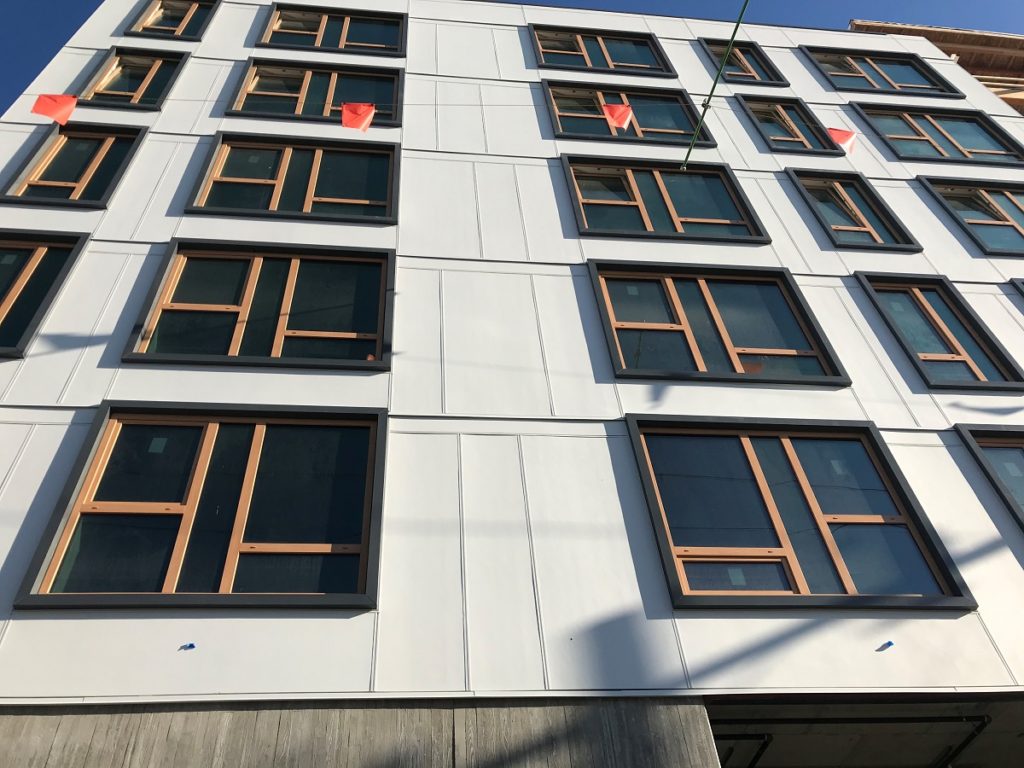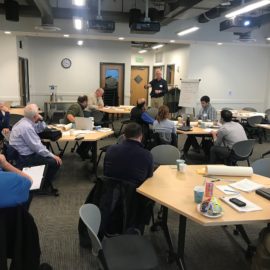
On Thursday, HDC’s Practical Development Solutions Affinity Group hosted a Tour of Weber Thompson’s Solis Apartments, a multi-family Passive House project.
Solis is a multi-family project set in the heart of Capitol Hill, featuring 45 apartments in a mix of studios, 1-, and 2-bedroom units designed by HDC member Weber Thompson.
As a first of its kind building in Seattle, SOLIS aims to use 80% less energy than a typical multi-family building for heating and cooling. The residential portion of the building is pursing the rigorous PHIUS 2015 passive house building energy certification standard by the Passive House Institute US.
Every aspect of Solis is designed with energy efficiency in mind. A featured exterior stair and exterior elevator eliminate conditioned circulation space, while also adding natural gathering spaces on every floor.
The team at Weber Thompson shared their Top Ten Tips For Multifamily Passive House Design (by Aaron Swain, AIA, CPHC, LEED Green Assoc., and Emily Doe, AIA, CPHC, LEED AP BD+C):
- Make Passive House a Goal Early in the Design
The sooner it is recognized as a project goal, the better it can be integrated into all aspects of the design - OnBoard the Right Team from the Beginning
Especially the architect, contractor, mechanical engineer, and energy modeler - Set Passive House Boundary
Get buy-off from PHIUS on a boundary that makes sense for the project if mixed-use. There is flexibility here, especially in a dense urban area where the success of ground floor retail is a high priority and owners may not way to put restrictions on future tenants - Simplify Building Geometry
This limits the ratio of conditioned floor area to exterior wall area and also greatly simplifies the detailing of the air barrier and thermal continuity. Stack residential units wherever possible. - Limit Vertical Continuity Between Floors
Stairs, elevators, and shafts are notorious challenges in multi-story passive house projects. They are susceptible to air leakage due to detailing challenges and fire rating requirements, see #8. The air pressure differences from elevator movement can be detrimental in an airtight building. Consider running vertical shafts outside the conditioned envelope. Since unconditioned area doesn’t count toward floor-area-ratio (FAR), this strategy also helps maximize developable FAR! - Use Industry-Standard Building Assemblies Whenever Possible!
This will maximize competitive subcontractor bids which will help keep costs down and the schedule on track. - Strategize for Solar Heat Gain
Densely packed units hold in excessive heat. Cooling from solar heat gain can be one of the biggest energy demands. Since building massing/form and orientation is often inflexible on urban multi-family sites, it is crucial to identify a strategy for managing solar heat gain early in the design process. - Clarify Fire Ratings
Openings in fire ratings can be especially tricky given the current selection of door, window, and access panel products. It is possible to find products that meet Passive House air leakage requirements or fire rating requirements, though few meet both. - Limit Penetrations to the PH Envelope
Run unit supply and exhaust internally and combine penetrations whenever possible. Consider using condensing dryers instead of conventional, as they do not need a vent to the exterior, or plan for a communal laundry room to consolidate vent openings. Run roof drains and other HVAC shafts externally whenever possible. - Leverage Design Features for Multiple Functions
Balconies can double as fixed shading devices. Exterior roller shades provide facade texture and dynamic shadow lines. Exterior circulation can provide outside amenity space. Justify the expense by maximizing the value!

